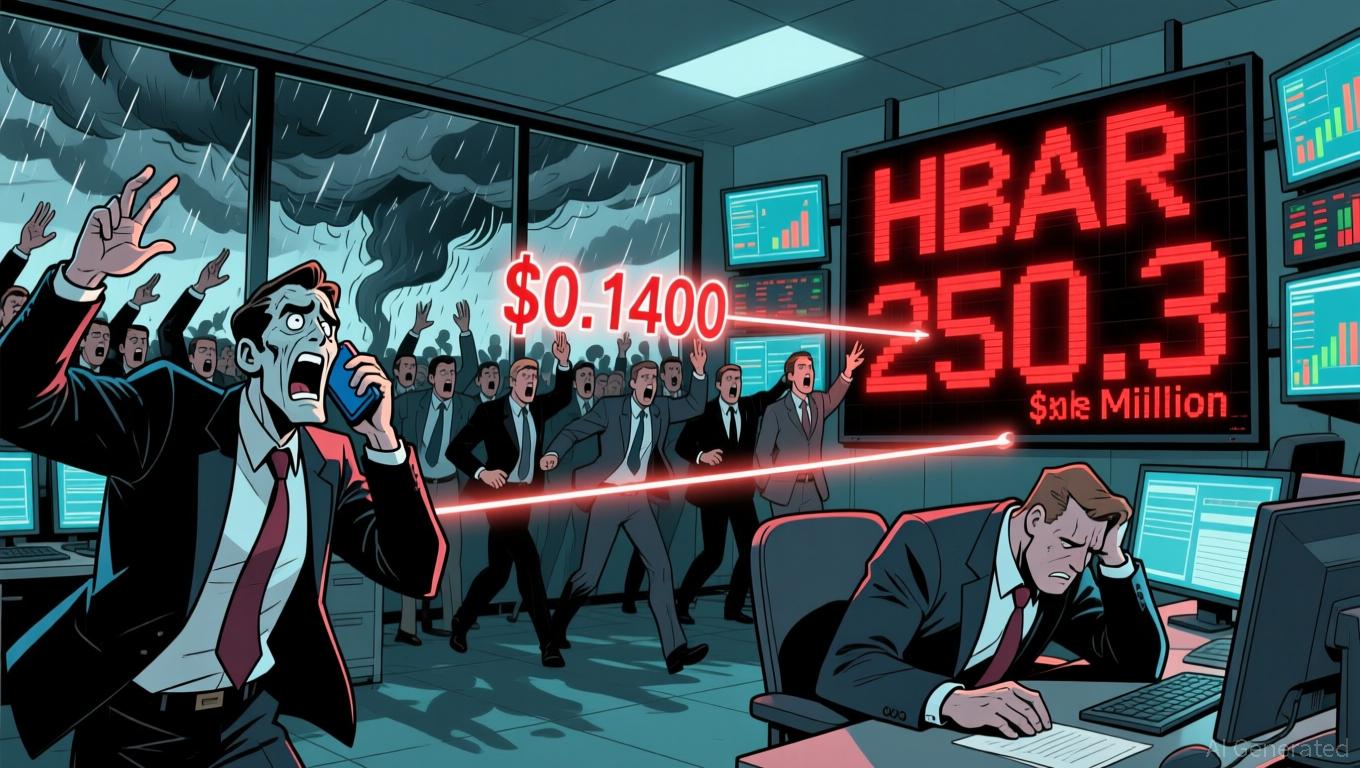Solana's Abrupt Decline: Uncovering the Causes and Implications for Cryptocurrency Investors
- Solana's 30% Q4 2025 price drop revealed diverging investor behavior: institutions accumulated 24M SOL while retail investors sold at losses. - Technical strengths (2s transactions, $0.01 fees) persist, but Bitcoin Munari's 2027 Layer-1 transition raised short-term liquidity concerns. - Institutional confidence via GSR's upgraded tools and strategic asset-class positioning contrasts with retail panic, signaling ecosystem maturation. - Market dynamics highlight the tension between innovation risks (infras
Technical Foundations and Emerging Challenges
Solana’s technical design has long been a major draw. The blockchain still processes transactions in less than two seconds and charges significantly lower fees than
Validator statistics, though not specifically detailed in recent updates, remain a crucial area to watch. Solana’s impressive speed and efficiency rely on its validator network, but any slowdowns—whether in consensus or node syncing—could intensify price swings.
Institutional Confidence vs. Retail Flight
Institutional moves in Q4 2025 reveal a pattern of measured optimism.
This institutional steadiness stands in stark contrast to blockchain data showing a high Net Realized Profit/Loss ratio,
Market Implications and Investor Strategy
For those investing, Solana’s Q4 2025 slump emphasizes the need to separate short-lived volatility from deeper structural issues. The blockchain’s core strengths—fast transactions, minimal fees, and continued adoption by platforms like PrimeXBT
Investors should also closely monitor institutional trends.
Conclusion
Solana’s Q4 2025 decline serves as an example of the fragile balance between technological progress and investor psychology. While innovations such as
Disclaimer: The content of this article solely reflects the author's opinion and does not represent the platform in any capacity. This article is not intended to serve as a reference for making investment decisions.
You may also like
The Emergence of ICP Caffeine AI and Its Impact on Decentralized Computing Markets
- ICP Caffeine AI, developed by DFINITY, redefines decentralized compute by enabling AI app development via natural language and reducing inference costs by 20–40%. - Its reverse-gas token model and "chain-of-chains" architecture boost scalability while creating deflationary incentives, attracting $237B TVL but facing 22.4% dApp activity declines. - Competitors like Palantir ($1.18B Q3 revenue) and struggling BigBear .ai highlight ICP's unique censorship-resistant niche, though centralized rivals maintain
Hyperliquid News Today: Reduced Fees or Doubts? Hyperliquid’s Bold Strategy for Expansion
- Hyperliquid, a top-20 DeFi exchange, faces a 25% HYPE token price drop to $25 amid market volatility and declining investor confidence. - Its HIP-3 Growth Mode initiative slashes trading fees by 90% to attract new markets but has yet to reverse downward trends or boost liquidity. - Analysts warn fee cuts may not address long-term user retention challenges in a crowded DeFi landscape dominated by centralized rivals like Binance. - Market skepticism persists as traders await volume explosions and tighter s
Bitcoin News Today: Bitcoin ETFs See $2.96B Withdrawals as Investors Seek Greater Macro Certainty
HBAR Drops 11.5%: Institutional Withdrawals and Liquidity Challenges Highlight Market Vulnerability
- HBAR token plummeted 11.5% on Nov 21 as institutional selling overwhelmed markets, breaking key support at $0.1350 and triggering stop-loss cascades. - Preceded by prior declines including 6% drop on Nov 18 and 180%+ volume spikes, forming descending channel patterns signaling deteriorating market structure. - Liquidity crises emerged with 250M-token sell wave (98% above average) and trading halts, exposing fragile infrastructure amid crypto market cap falling below $2.9T. - Institutional distribution do
